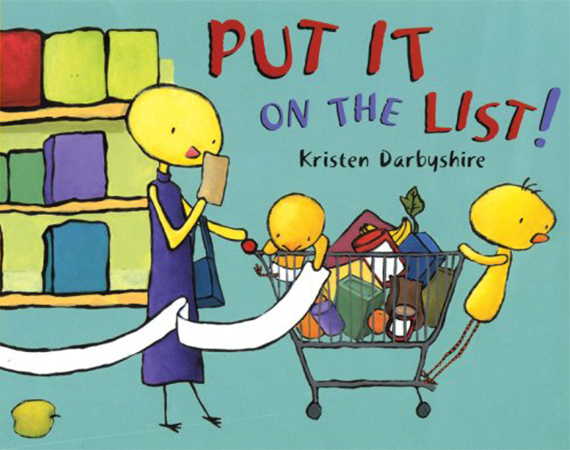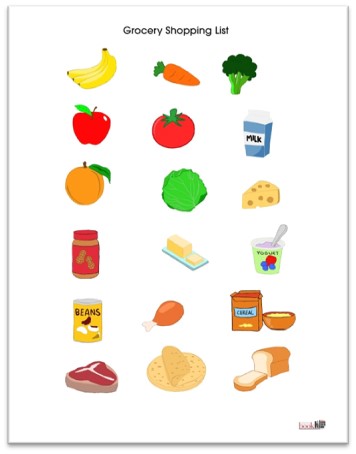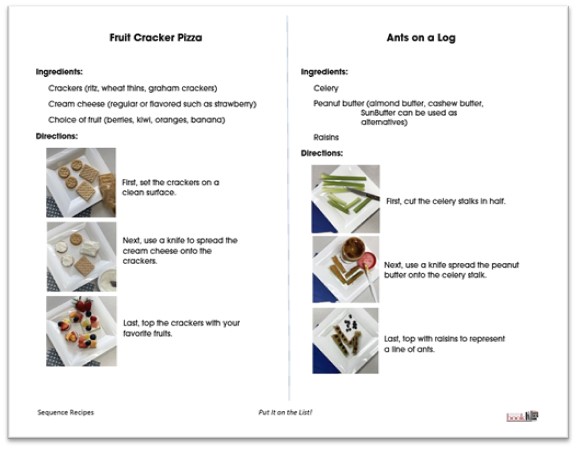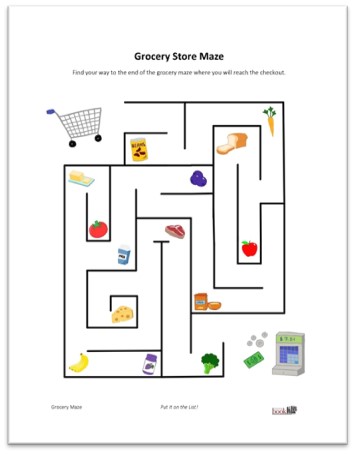

Packed with vibrant and playful illustrations, Put It on the List! readers will learn about the value of list-making and the days of the week.
Not just a fun read, this book also inspires lessons about balanced nutrition and three-step processes.
Each of the lessons can be used alone or together to support family literacy programs:
Adult Education: Empower participants to sort, organize, and create their own efficient grocery lists with ease.
Parent/Caregiver Education: Discover the essentials of nutrition and learn about food groups by creating a balanced plate.
Interactive Literacy Activity: Family members use their foundation in nutrition and a balanced plate to help their children sort food into categories.
Early Childhood Education: Learn the importance of a three-step process with this fun-filled lesson for children.
Additional Activities:
Use the wordless grocery list to include children in identifying and shopping for groceries. If using coupons with images of products, ask your child for help in finding the product on the shelf. Encourage children to gather food for the cart while practicing counting: "Please put three apples into this bag." Another way to engage children in the grocery shopping experience is to let them choose a new food to try. Encourage children to pick out a fruit or vegetable they've never tasted before and talk about how it can be prepared. This helps children feel more invested in the shopping trip and can lead to them being more willing to try new foods at home.
Empty food and drink boxes can be used to create a pretend grocery store. This can be things such as cereal or cracker boxes, milk or egg cartons, or plastic bottles. Imaginative and imaginary play assists young children in symbolic development, using actions or objects to represent something else. Create a pretend cash register from a cardboard box and play money to add to the experience. Pretend play improves social and communication skills.
Alphabet awareness can be supported through “eating the alphabet." Children can select food items that correspond with the letters of the alphabet. For example, choosing apples for the letter A, bananas for the letter B, and cantaloupe for the letter C. This activity can also be expanded to include naming foods that start with each letter of the alphabet to further reinforce letter recognition skills: A is for avocado, B is for broccoli, C is for cabbage, D is for...
Encourage children to identify and name the different foods on the plate, as well as their colors. Consider creating snacks based upon color. For example, a plate filled with only green foods such as snap peas, cucumbers, pears, broccoli, and lettuce; or a plate filled with only red foods like tomatoes, strawberries, watermelon, kidney beans, red peppers, and radishes. This can help to reinforce known foods while also introducing new ones.
Learning to write doesn’t always have to include a pencil and paper. To motivate children to practice forming their letters, take a large cookie sheet or shallow baking dish and fill it with a layer of salt. Have children practice writing letters and words into the salt using their finger, a paintbrush, or a popsicle stick. Gently shake the tray to redistribute the salt and “erase” the writing. Through this engaging activity, children experience the physical movements involved in writing and develop muscle memory. This can be especially helpful for those anxious about writing with pencil and paper.
 |
 |
 |
| Wordless grocery list | Sequence recipes | Grocery store maze |


